Read Brandon Yu’s article on SFChoricle.com
When Carlton Evans co-founded the Disposable Film Festival in 2007, he wanted to accommodate a historic emerging shift in a century-old medium. For the first time, video cameras could realistically exist in every pocket — the making of a “legitimate” film, of creating visual art, was possible for nearly anyone and everyone.
A decade later, on Thursday, March 30, the Disposable Film Festival begins its 10th consecutive year as the premier showcase for what has become an upheaval of the traditional artistry, industry and consumption of film and video entertainment. This year’s San Francisco International Film Festival will even include a 10-year retrospective on DFF within its program.
The four-day festival’s primary event, a two-hour program of the year’s best short film submissions from around the world, will play at the Castro Theatre before touring internationally, as it does annually. Each year, the program has seen more “democratization of filmmaking,” featuring fresh talents enabled by the accessibility of camera and film technology.
“The vision that we saw was not that the cameras were going to be everywhere,” says Evans, 46, an independent film producer (“The Last Black Man in San Francisco”) and DFF’s executive director. “That was obvious, everyone knew that. I think the insight was more that everyone was going to become a filmmaker. And that because of that, we were going to see innovation in storytelling that we haven’t seen in decades.”
Evans founded the festival with fellow filmmaker Eric Slatkin, who now works in Los Angeles, as a small art project of sorts, with a “delusional” idea in the periphery of a long-term future playing at the Castro. That became a reality in the festival’s fourth year.
“It’s hard to imagine now, but some of the people we talked to were like, ‘Why would you show this in the theater? It’s going to look terrible. The pixels are going to be, like, this big,’” Evans says.
For DFF films, the ubiquity of inexpensive technology — from point-and-shoot cameras to basic animation software — can be an opportunity to enhance creativity and play with film formally. Simple voice-over and a montage of photos trace the deterioration of a relationship; cell-phone-quality footage augments the fear in a horror film; crude drawings redefine our conception of animation and its possibilities.
But DFF is not a tech showcase, Evans stresses, and its lower-budget films are not necessarily so for their own sake. Films are accepted for their artistic merit rather than on their perceived disposable tech.
“We’re a film festival that came about during a sort of revolution, but we’re still a film festival,” Evans says. “We’re still film. It’s about stories in experimentation and finding new ways of telling those stories. It’s not about pixels, and it never was.”
The festival is ultimately a venue for deserving artists and filmmakers who otherwise might struggle to find one, especially in a traditional movie theater.
“Even though my work is freely available online, I still think screening work in a darkened room with a captive audience is important, in that it grants the piece unfragmented attention,” says computer graphic artist John Butler, 58, whose “Children of the Null,” a motion-capture, “no-budget” dystopian film, will appear in this year’s program.
But over time, the nature of the Disposable Film Festival’s exposure has changed as media platforms and the mainstream industry and audiences have slowly caught up to this new age.
The commercial explosion of YouTube means DIY video makers profit big, whether through the company’s own monetization program or through outside deals such as HBO’s show “Insecure,” based on creator Issa Rae’s homemade YouTube series.
Evans refers to “Tangerine” — a 2015 film about a transgender sex worker that was a hit at the Sundance Film Festival — which was shot entirely with iPhone 5s and some additional equipment. Vimeo, the more artistic video-sharing site and an official partner with DFF, has developed a robust community of filmmakers and, as Butler notes, an appreciative audience for unconventional works.
While DFF began as the only platform for obscure but valid films, it has now become a middleman for films to potentially reach mainstream heights. A 2015 festival-winning film, for instance, turned into an HBO show, “Gran’pa Knows Best.”
The opportunity for commercial exposure is an entirely welcome shift to Evans. “I want artists to be able to live off their art,” he says. “It’s becoming an open atmosphere for new ideas, which is great.”
The scope of DFF has expanded greatly; its first year garnered less than 100 submissions, while totals now exceed well over 1,000. Among a handful of events, this year’s festival will feature a Citizen Journalism workshop, recognizing the redefining and empowering of social protest, such as the Black Lives Matter movement, birthed directly from the last decade’s tech overhaul.
Of course, new visions of film will grace the screen as well, even as the omnipresence of camera technology, Evans says, may inspire a new wave of homogenized cinematic storytelling. DFF will continue to stand as a pioneering spotlight for the artistic novelties and creative verve that can always be found in simple devices.
“Every year there’s this anxiety that we’re not going to top the year before, that the program won’t be as strong,” Evans says. “But year after year, the filmmakers turn out, and they’re better and better and better.”
Brandon Yu is a Bay Area freelance writer.
Disposable Film Festival: Thursday-next Sunday, March 30-April 2. Free-$35. Competitive Shorts & Awards at the Castro Theatre, 429 Castro St., S.F. https://disposablefilm.com
San Francisco International Film Festival 10-Year Retrospective: April 13. The Roxie Theater. www.sffilm.org




